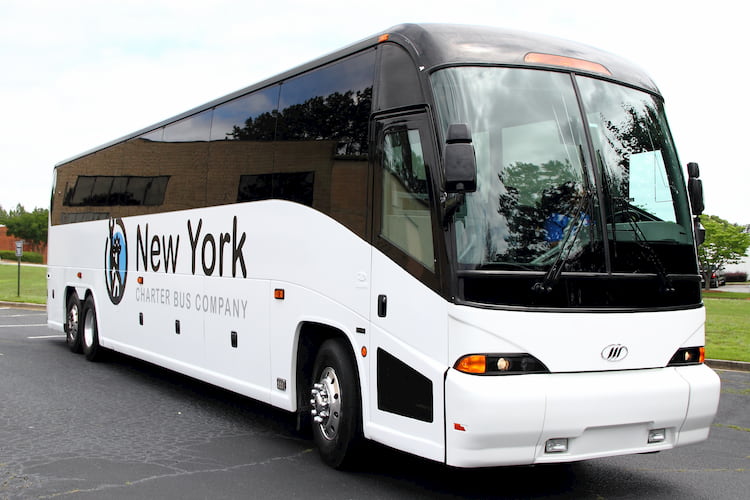20 Pro Reasons For Choosing Event Transportation Sites
20 Pro Reasons For Choosing Event Transportation Sites
Blog Article
How Do You Budget And Calculate The Cost Of Employee Shuttle Transportation
Here are ten top suggestions for budgeting and costing the cost of employee shuttles.
1. Conduct a comprehensive cost analysis
To begin, do a thorough cost analysis for your total shuttle service. Included in this analysis should be direct expenses, such as the purchase, leasing or rental of vehicles. Also, operational costs, like maintenance, fuel and insurance, as well drivers pay their salaries. Knowing the full range of costs will assist you in determining the amount required to run the shuttle service.
2. Establish Clear Budget Goals
Establish specific goals for your budget based upon the cost analysis. Choose how much your business will allocate to shuttle services. Then, you can establish key performance indicators (KPIs) that can be used to determine the level of performance. These KPIs could include employee satisfaction, usage rates and overall effectiveness. Specific goals can help guide spending and resource allocation.
3. Explore your Funding Options
Explore all sources of funds for the shuttle service you offer. The sources of financing might include corporate funds, grants or partnerships with local authorities. Knowing the options for funding available may ease financial burdens and provide more comprehensive service offerings.
4. Prioritize Vehicle Options that Offer the Best Value
The most efficient vehicles should be chosen for cost at the beginning, but also considering their long-term costs. Consider factors such as vehicle reliability, maintenance requirements and efficiency of fuel. Opting for used vehicles in good condition, or leasing instead of purchasing could reduce upfront costs.
5. Implementing a Pricing Model using Dynamic Prices
You should think about the possibility of the concept of a dynamic pricing model for shuttles, if it is feasible. The cost for use of the shuttle to offset the cost of operating. Offering a tiered pricing structure based on usage may encourage more employees to utilize the service, but still contribute to the budget.
6. Cost Management Utilize Technology
Leverage technology to enhance efficiency and cut expenses. Fleet management software can be used to monitor maintenance schedules, optimize routes and track the use of fuel. GPS tracking can help improve scheduling and cut down on the amount of idle time. This will lower the cost of fuel. Investing in technology may have some initial costs, but could bring significant savings over time.
7. Monitor and Control Operational costs
Regularly review operational costs to find areas where expenses can be reduced. Keep track of fuel consumption as well as expenses for maintenance and driver overtime. The best way to save money is through the implementation of strict fuel management techniques such as encouraging environmentally friendly driving. To ensure that shuttle services remain within budget, conduct monthly or quarterly audits.
8. Engage employees in cost-saving efforts
Encourage employees to participate in shuttle programs that reduce costs. It is possible to encourage employees to carpool, or reward them for the time they utilize the shuttle. Engaging employees fosters ownership and could increase the number of trips.
9. Plan for Contingencies
Incorporate a contingency into your budgeting process to cover any unexpected expenses. There are unforeseen costs that shuttle services might encounter, such as repairs in emergency situations or fuel price fluctuations. Planning a small amount of money for contingencies can provide financial security and help the service run without issue.
10. Review and adjust the budget Regularly
Then, you can continue to assess and adjust budgets based on the actual usage and performance. Collect employee feedback regarding their satisfaction and experiences with shuttle services. Regular assessments help determine trends in the transportation needs and will allow timely changes to the budget to maximize the allocation of resources.
These tips will help organizations to manage their costs efficiently and develop a budget that can be sustainable for employee shuttle transport which will ultimately increase the efficiency of the service and employee satisfaction. Check out the recommended employee shuttle for website recommendations including shuttle bus, san airport shuttle, pickup from lax, airport pick up service, rides to lax, lax airport transfers, airport bus shuttle, lax airport shuttle service, airport transportation services, service shuttle and more.
Ten Top Tips For An Economical And Affordable Corporate Event Transportation
Here are some top tips about cost and price factors in a company's transportation service.
1. Conduct a Comprehensive Cost Analysis
Complete a cost analysis of every aspect. It includes costs for car leasing or rental and driver wages, fuel and costs, insurance, maintenance, and additional fees such as parking or permits. Knowing the total cost will help you create a a realistic and achievable budget.
2. Budget Framework: Develop a Clear Budget Framework
Create a budget-friendly framework that outlines how much your organization is willing to spend on transportation. This budget framework should include every cost identified, and allow flexibility for unexpected expenses. Budgets can guide your decisions and ensure that transportation costs are kept in check.
3. Consider Different Transportation Options
Think about the various transportation choices for your event. This could include vans, shuttles or ride-sharing services. Consider factors such as ease of use, capacity and comfort when evaluating the costs of each transportation choice. The budget for transportation can be improved by selecting the option that is most efficient and affordable, while also meeting the guests requirements.
4. Dealing with Transportation Service Providers
Negotiate the contract to ensure you receive the most competitive price. Many transportation companies will offer discounts to corporate events or bulk bookings. A good relationship with service providers can allow you to receive better rates as well as better services that ultimately aid your budget.
5. Plan for Fuel Prices
Be aware of the cost of fuel when you calculate your budget. It could impact the transportation costs dramatically. The distance to the venue and the expected amount of trips are important. If you can, discuss fuel-efficient vehicles with the transport company to save money.
6. Include Contingency Funds
Allocate a portion of the budget for contingency funds to pay for unexpected expenses. Transport issues can be unpredictably. These could be related to vehicle breakdowns, or the need to make additional trips. Contingency funds ensure that the situation can be dealt with without compromising the quality or spending too much.
7. Group discounts and packages are available.
It is possible to save money by looking for specials or discounts provided by transportation companies. Many companies offer discounted rates for large corporate events or groups. This can result in an excellent savings. Ask about discounted rates that could include extra services such as on-site assistance or additional vehicles.
8. Monitor and track Expenses
Maintain a close watch on all transportation-related expenses throughout the planning and execution phases. Tools for budgeting and spreadsheets can be used to monitor costs in real-time. Monitoring expenses can help to identify areas to cut and help keep the budget in line.
9. Receive feedback on Budgeting for the Future
After the meeting, collect feedback from attendees on their experiences with transportation. Also inquire about any additional costs that may have been paid for. The feedback you receive will provide valuable insights into how effective the transportation service is and can inform your future budgeting choices. Recognizing what works and what doesn't work will help refine the budget for events.
10. Estimate Total Costs of the Ownership
When considering transportation options take into consideration the total cost of ownership (TCO) for your vehicle. This doesn't just cover the cost of the vehicle however, it also includes all ongoing expenses including maintenance, depreciation, and insurance. Understanding TCO is important for making educated decisions that balance initial costs against future financial implications.
By following these tips organizations can budget and manage costs efficiently for corporate transportation. Budget planning is essential in order to make sure that transportation needs of the event are fulfilled and also to make the event successful by allowing the attendees to concentrate on the event and not the logistical issues. Budgeting and cost control can improve the image of a company and demonstrate a commitment to the efficiency and accountability. View the best I thought about this for site recommendations including reach logistics, globe transport, coach transportation, service transportation company, luxus transportation, transport systems, logistics company near me, transportation services, logistics web, transportation and logistics services and more.